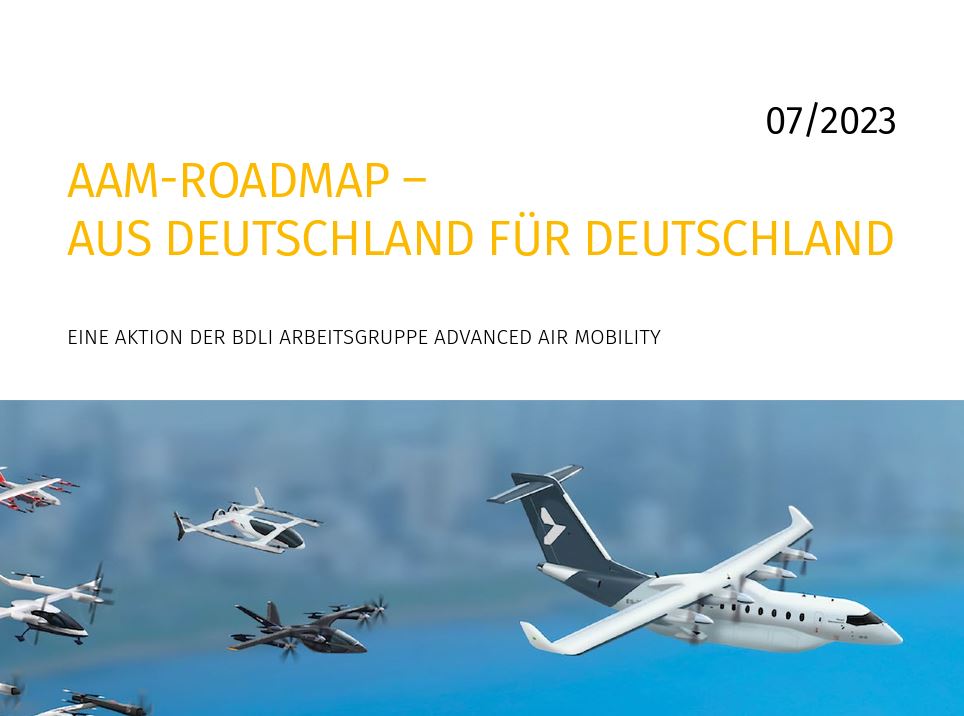
“In view of the required capacities in the airspace and in the infrastructure at airports with a control zone, it is already foreseeable that hardly any additional infrastructural, operational and personnel capacities will be available in the existing fleet for VFR-eVTOL traffic without establishing new, independent infrastructures, flight procedures and airspace solutions for eVTOL,” says the new BDLI report (translated from the German via google translate. “For an economical and safe eVTOL racing system, however, it is essential to be able to increase the number of movements to the maximum number of movements per hour, depending on the existing infrastructure, independently and parallel to existing air traffic and, if possible, without setting up additional ATC structures.”
DFS has already developed some prototype eVTOL approach and departure paths into and out of a current airport which should serve as a template for other eVTOL route planning, says BDLI.
“It is therefore necessary to develop and promote new independent approach and departure procedures for eVTOL to and from controlled airports, in such a way that the existing and planned number of arrivals and departures remains unaffected. For example, DFS has developed an eVTOL sector for a German commercial airport, which could also serve as a template for other airports. This can be done on the basis of existing regulations and procedures, e.g. for helicopters, with prior joint specification of applicability. The specific local situation of airports must be taken into account. In addition to an integration of eVTOL on the airside, this is also conceivable on the landside. Benchmark projects at least three to four different airports are to be sought as examples. Existing agreements and projects initiated by DFS with airports, such as Stuttgart and Munich, are to be taken into account.”
“….Providing DFS with a mandate to actively develop and introduce solutions for eVTOL operations – together with industry German commercial airports in particular have recognised the added value and opportunity for sustainable aviation through the pioneering role of the eVTOL as an electric passenger aircraft on short- and regional routes and have pushed ahead with initial planning for the necessary ground infrastructure. Due to the existing challenges at commercial airports, initial solutions for airspace integration were pre-developed together with manufacturers and DFS. A continuation of this initiative is imperative by commissioning and supporting DFS to actively develop and implement independent and innovative solutions for safe and economical eVTOL operation in Germany together with industry.”
As elsewhere in the world, the German aerospace industry is keen to exploit existing regulations and procedures for early eVTOL activities, rather than develop new rules.
“The basic EASA Regulation, which is based on a risk-based and operation-centric approach, should be used as the basis for this new regulatory framework for eVTOL operations in Germany,” says the association. “A clear definition of a uniform legal framework of all responsibilities should be developed from this framework and should include rules on safety, security and data protection in accordance with the EU Regulation….It is also recommended that Germany adopt the three implementing regulations on U-Space from 2023 from the EU. It is also recommended to initiate the development of a harmonised drone taxonomy (classification) in the EU. “
“In order to enable the flight operations of eVTOLs as quickly and safely as possible, real flight tests and flight trials should be facilitated in order to promote the introduction of innovative technologies. The framework conditions for vertiports and the infrastructure on the ground are necessary and should be developed in parallel…. “
For more information
https://www.bdli.de/sites/default/files/2023-07/230721_AAM_Roadmap_final.pdf

